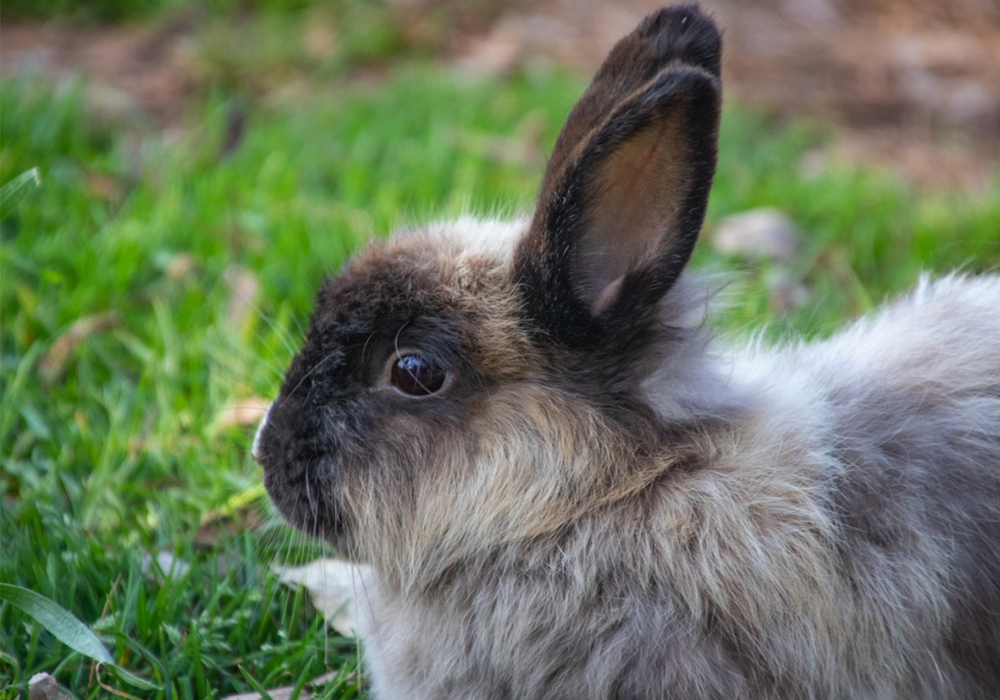How to Introduce Rabbits After Neutering

Rabbits are sociable animals and for their health and happiness need to live with other rabbits. Ideally rabbits should be kept in litter pal pairs or with another rabbit of the opposite sex. In either scenario, it is in rabbits best interest to be neutered or spayed.
Why should rabbits be neutered?
It is recommended that bunnies are neutered for health and welfare reasons. Un-spayed female rabbits are at a high risk of developing reproductive cancers. By getting your bunny spayed when they are young, this risk is greatly lowered.
Did you know that neutered male rabbits will live longer? This is because neutering reduces sexual aggression and frustration. Being neutered will also improve rabbits bonded relationships and reduce aggression and territorial behaviour towards owners.
How much does neutering/spaying rabbits cost?
The cost of neutering or spaying depending on your area, the specific veterinary centre and the individual rabbits needs.
What happens after neutering?
- Rabbits will often be a bit drowsy and wobbly after surgery, however this is completely normal.
- Both surgical glue and stitches tend to be dissolvable and will disappear naturally over the course of approximately 14 days. The area will be shaved and may look very sore, however try not to worry – it often looks worse than it is!
- Upon going home, your vet should give you some antibiotics to ward off infection.
- Ask for probiotics to settle the tummy (as antibiotics can upset the flora in the gut and put them off their food – this can be dangerous during their healing process).
Supporting Rabbits After Neutering
- Your rabbits should be kept on their own for 4 – 6 weeks to allow any leftover sperm to die and for the wounds to heal. If adult males are introduced to a female any sooner than this, there is a risk of pregnancy.
- Don’t worry if your bunny doesn’t eat right away, their appetite should gradually return. You can try tempting them with small pieces of their favourite veggies, fresh hay and tasty natural nuggets. Always monitor their food intake carefully.
- Keep them comfortable. Woodshavings or other similar substrate as it may irritate the wounds of freshly spayed or neutered rabbits. Leading to the risk of discomfort, pain and infection. Instead use soft fleece blankets or puppy training pads. Remember to wash and/or replace the bedding daily.
- Clean the wound using water that has been boiled then cooled down. Cotton wool pads are ideal for dabbing the surgical area. This should be done around once a day to maintain cleanliness.
How to Reintroduce Rabbits After Neutering
After neutering your bunnies, it is important to wait 4-6 weeks before allowing full contact interaction. This will give them time to heal after their operations and for their hormones to settle.
During their healing they should be kept together in adjoining cages. However it is important they are able to see and smell each other. This allows them to become accustomed again to each other without the risk of fighting.
If you don’t have an enclosure for your house rabbits, you can put the two rabbits in adjoining rooms with a baby gate or similar barrier between them. For rabbits housed outdoors, you will need two enclosures which must be facing each other.
The rabbits will be very curious about each other, touching noses through the bars and likely displaying some courtship behaviour such as honking and circling. Keep a close eye on body language, one positive sign to look for is both rabbits lying down either side of the barrier. This shows they are relaxed and comfortable around each other. Feeding both bunnies together is beneficial as it will get them used to eating together again.
Introducing rabbits is a tricky affair and can take anything from a few days to a few weeks. It is all dependant on the individual’s personalities, and patience will be key. If either rabbit is displaying aggressive behaviour such as growling and biting, wait a while longer before allowing them to interact fully.
The Bunny Bonding Process
When they are ready and have been consistently demonstrated relaxed behaviour, you can start to slowly introduce them.
Step 1
Prepare a neutral space for the introduction, somewhere that neither rabbit feels is “their” place. This should be a safe space that has not belonged to either rabbit before. Make sure the area is as large as possible, broken up with various obstacles and perhaps a few favourite vegetables to act as distractions. Cardboard boxes and tubes make fantastic places to hide bunnies become nervous.
Allow the potential pair to enter the area simultaneously.
Rabbits should NEVER be left unsupervised during the bonding process. If they get upset or stressed, you need to be there to either separate them.
Step 2
What happens next really depends on the pair. Sometimes after a little ‘eyeing-up’ and perhaps a little chasing the rabbits may lose interest in each other and do their own thing. Often, you’ll find that one of the pair shows far more interest with the other seemingly indifferent to their new follower!
In the most common scenario, one of the rabbits will take the lead and approach the other, sniffing and circling them and trying to mount them. This is a common dominance behaviour and is the rabbit’s way of figuring out who is going to be the “boss”. A submissive rabbit will let this happen, putting their head on the ground, while a less submissive rabbit may nip or run away. Stay with the rabbits at all times and intervene if you feel one or both rabbits are becoming too stressed.
Occasionally the ‘introduction’ may culminate in fighting. If this happens split the pair immediately and try again in a few days.
Step 3
Be patient and allow them time!
Providing fighting has not broken out between the pair allow them 10-20 minutes of interaction before returning them to their respective cages. Repeat this process daily, and increase the interaction time.
Rabbits will eventually stop taking notice of each other and become curious about their surroundings instead. This is the turning point when it is usually safe to let the rabbits roam free together, however, continue to separate them when you are not there to supervise.
When the rabbits start to lie down together or groom each other, the bond is made and will continue to deepen with time. At this stage the pair can be put into the accommodation that they are to share together to see how they react. Remember to regularly observe for any potential tension.
Remember to never rush this process.
Bunnies need to time adjust to one another and be given the freedom to do this in their own time. If you see that one or both bunnies are becoming distressed or are showing aggressive behaviors – stop. Go back a step and start again.
Once a bond has been formed, rabbits should never be separated for any length of time.
If one has to visit the vets – they will both need to go. If one comes out to be groomed – they both come out. They should at all times be kept together.
They once bonded, are inseparable and are dependent on one another. Separating bunnies causes them stress.
For more information on rabbits, why not check out our busting bunny myths blog?


